Growing Winged Beans can transform your garden into a vibrant, edible landscape, and I’m here to show you how! Forget those bland, store-bought vegetables; imagine stepping outside your door and harvesting fresh, delicious winged beans right from your own backyard. This isn’t just about gardening; it’s about connecting with nature and enjoying the fruits (or rather, beans!) of your labor.
Winged beans, also known as asparagus peas, have a rich history, particularly in Southeast Asia and Papua New Guinea, where they’ve been cultivated for centuries. They’re a nutritional powerhouse, packed with protein, vitamins, and minerals. Traditionally, every part of the plant – the pods, leaves, flowers, roots, and seeds – is used in various culinary dishes.
But why should you bother growing winged beans yourself? Well, for starters, they’re incredibly versatile in the kitchen. You can steam, stir-fry, or even add them raw to salads. More importantly, in a world increasingly concerned with food security and sustainability, growing your own food is a powerful act. Plus, let’s be honest, there’s nothing quite like the satisfaction of nurturing a plant from seed to harvest. This DIY guide will provide you with simple, effective tricks and hacks to ensure your winged bean plants thrive, even if you’re a complete beginner. So, grab your gardening gloves, and let’s get started!
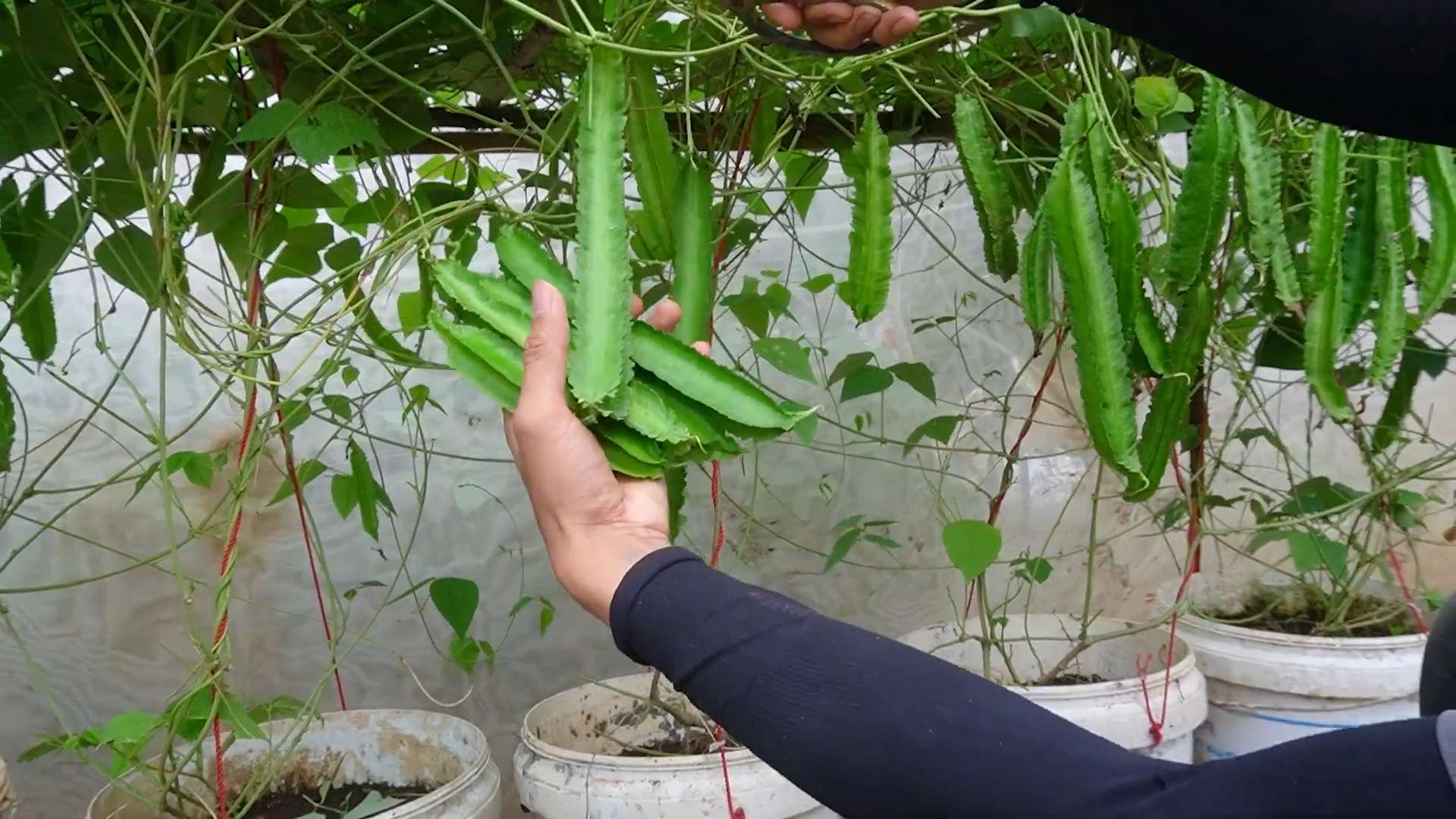
Growing Winged Beans: A Comprehensive DIY Guide
Okay, so you want to grow winged beans? Awesome! You’re in for a treat. These fascinating legumes are not only beautiful climbers but also incredibly nutritious. Every part of the plant is edible – the pods, beans, leaves, flowers, and even the tubers! I’m going to walk you through everything you need to know to successfully cultivate these unique plants in your own backyard.
Understanding Winged Beans
Before we dive into the nitty-gritty, let’s get to know our star a little better. Winged beans ( *Psophocarpus tetragonolobus* ) are tropical legumes that thrive in warm climates. They’re known for their distinctive four-sided pods that resemble wings, hence the name. They’re also nitrogen-fixing plants, meaning they enrich the soil as they grow.
Key Considerations:
* Climate: Winged beans love warmth and humidity. They need a long growing season with temperatures consistently above 70°F (21°C). If you live in a cooler climate, you might need to start them indoors.
* Sunlight: They need at least 6-8 hours of direct sunlight per day.
* Support: These are climbing plants, so they need a sturdy trellis, fence, or other support structure to climb on.
* Soil: Well-draining soil is crucial. They don’t like soggy roots.
* Watering: Consistent moisture is important, especially during flowering and pod development.
Getting Started: Planting Winged Beans
Now, let’s get our hands dirty! Here’s how to plant your winged beans:
1. Choosing Your Seeds:
* Source your seeds from a reputable supplier. Look for varieties that are well-suited to your local climate. Some popular varieties include ‘Chimbu’, ‘UPS 122’, and ‘Tanjong’.
* Inspect the seeds. They should be plump and healthy-looking. Avoid any seeds that are shriveled or damaged.
2. Starting Seeds Indoors (Optional):
* If you live in a cooler climate, starting seeds indoors is a good idea to get a head start.
* Timing: Start seeds about 4-6 weeks before the last expected frost.
* Materials: You’ll need seed starting trays or small pots, seed starting mix, and a heat mat (optional).
* Process:
1. Fill the trays or pots with seed starting mix.
2. Sow the seeds about 1 inch deep.
3. Water gently to moisten the soil.
4. Place the trays or pots on a heat mat (if using) and keep them in a warm, sunny location.
5. Keep the soil consistently moist but not waterlogged.
6. Once the seedlings have developed a few sets of true leaves, they’re ready to be transplanted outdoors.
3. Direct Sowing Outdoors:
* If you live in a warm climate with a long growing season, you can sow the seeds directly into the ground.
* Timing: Wait until the soil has warmed up to at least 70°F (21°C).
* Soil Preparation:
1. Choose a location that receives at least 6-8 hours of direct sunlight per day.
2. Amend the soil with compost or other organic matter to improve drainage and fertility.
3. Loosen the soil to a depth of at least 12 inches.
4. Create mounds or rows for planting.
* Sowing:
1. Sow the seeds about 1 inch deep and 2-3 inches apart.
2. Water gently to moisten the soil.
3. Keep the soil consistently moist until the seeds germinate.
* Germination: Winged bean seeds can be slow to germinate, so be patient. It can take anywhere from 10-21 days for them to sprout.
4. Transplanting Seedlings:
* If you started your seeds indoors, it’s time to transplant them outdoors.
* Hardening Off: Before transplanting, you need to harden off the seedlings. This means gradually exposing them to outdoor conditions over a period of 7-10 days. Start by placing them in a sheltered location for a few hours each day, gradually increasing the amount of time they spend outdoors.
* Transplanting:
1. Choose a cloudy day to transplant to minimize stress on the seedlings.
2. Dig holes that are slightly larger than the root balls of the seedlings.
3. Gently remove the seedlings from their trays or pots.
4. Place the seedlings in the holes and backfill with soil.
5. Water thoroughly.
6. Space the seedlings about 12-18 inches apart.
Providing Support: Trellising Winged Beans
Winged beans are vigorous climbers, so they need a strong support structure to grow on. Here are some options:
* Trellis: A sturdy trellis made of wood, metal, or bamboo is a great option.
* Fence: A chain-link fence or wooden fence can also be used as a support.
* Arbor: An arbor can provide both support and shade.
* Teepee: You can create a teepee structure using bamboo poles or branches.
Installing the Support:
* Install the support structure before or shortly after transplanting the seedlings.
* Make sure the support is strong enough to handle the weight of the mature plants.
* Guide the vines onto the support as they grow. You may need to tie them to the support initially.
Caring for Your Winged Beans
Once your winged beans are planted and supported, it’s time to provide them with the care they need to thrive.
1. Watering:
* Water regularly, especially during dry periods.
* Keep the soil consistently moist but not waterlogged.
* Water deeply, allowing the water to soak into the soil.
* Avoid watering the foliage, as this can promote fungal diseases.
2. Fertilizing:
* Winged beans are nitrogen-fixing plants, so they don’t need a lot of nitrogen fertilizer.
* However, they can benefit from a balanced fertilizer that is rich in phosphorus and potassium.
* Apply fertilizer according to the package directions.
* You can also amend the soil with compost or other organic matter to provide nutrients.
3. Weeding:
* Keep the area around the plants free of weeds.
* Weeds can compete with the winged beans for water and nutrients.
* Hand-pull weeds or use a hoe to remove them.
* Mulching can also help to suppress weeds.
4. Pest and Disease Control:
* Winged beans are generally resistant to pests and diseases.
* However, they can be susceptible to aphids, spider mites, and fungal diseases.
* Inspect the plants regularly for signs of pests or diseases.
* If you find any pests, you can try spraying them with insecticidal soap or neem oil.
* To prevent fungal diseases, avoid watering the foliage and ensure good air circulation.
Harvesting Winged Beans
The best part of growing winged beans is, of course, the harvest!
1. When to Harvest:
* Pods: Harvest the pods when they are young and tender, about 6-8 inches long. They should be bright green and free of blemishes.
* Beans: You can also harvest the mature beans, but they need to be cooked before eating.
* Leaves: Harvest the leaves throughout the growing season. They can be used in salads or cooked like spinach.
* Flowers: The flowers are also edible and can be used in salads or as a garnish.
* Tubers: The tubers can be harvested after the plants have died back in the fall.
2. How to Harvest:
* Pods: Use scissors or a knife to cut the pods from the vine.
* Beans: Shell the mature beans from the pods.
* Leaves: Pinch off the leaves from the stem.
* Flowers: Pick the flowers from the vine.
* Tubers: Dig up the tubers from the ground.
3. Storing Winged Beans:
* Pods: Store the pods in the refrigerator for up to a week.
* Beans: Store the mature beans in an airtight container in the refrigerator for up to a week. You can also dry or freeze them for longer storage.
* Leaves: Store the leaves in the refrigerator for up to a few days.
* Flowers: Use the flowers fresh.
* Tubers: Store the tubers in a cool, dry place.
Enjoying Your Harvest
Winged
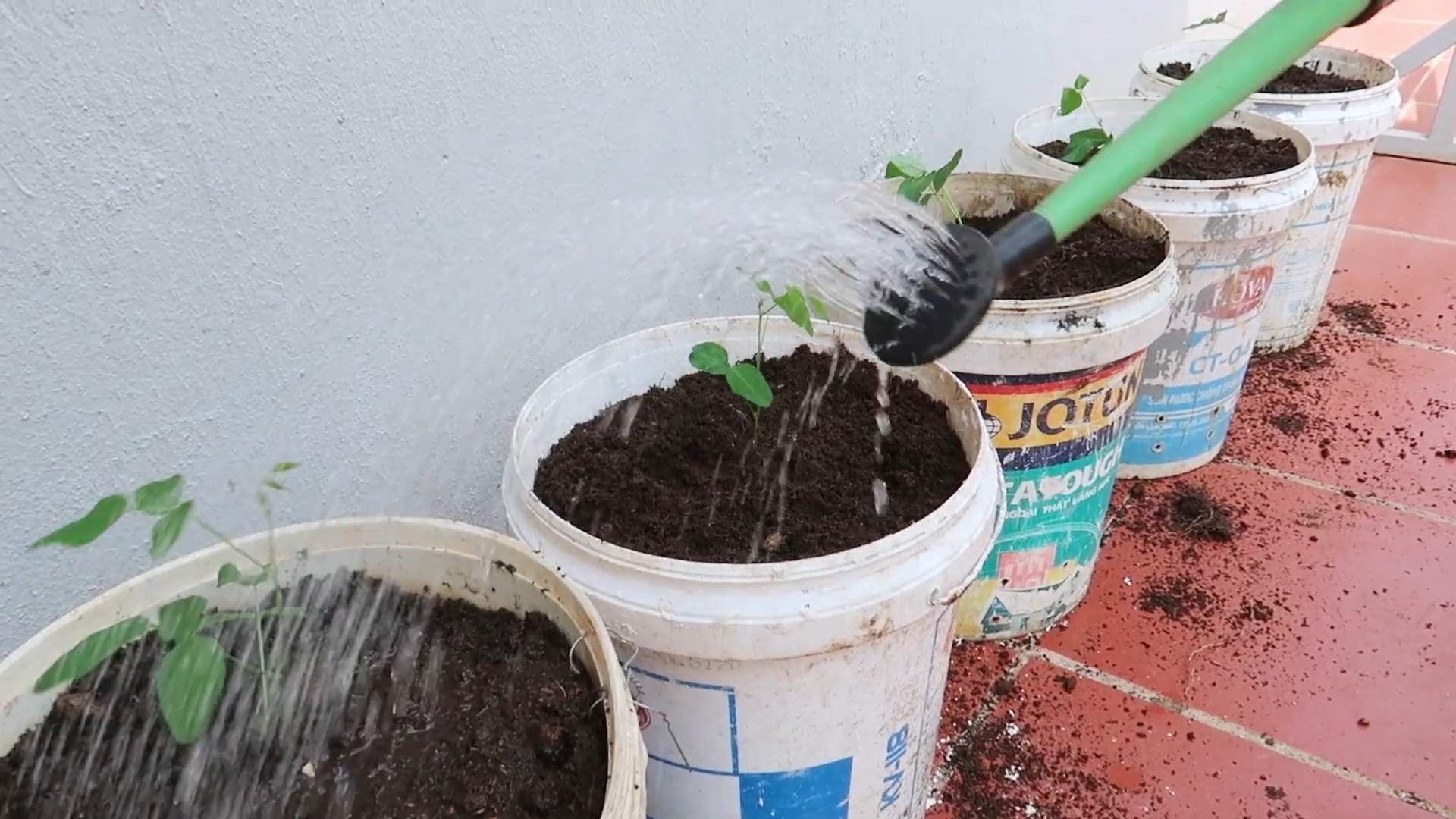
Conclusion
So, there you have it! Growing winged beans at home isn’t just a gardening project; it’s an adventure in flavor, sustainability, and self-sufficiency. We’ve explored the ins and outs of cultivating this remarkable legume, from selecting the right variety to harvesting its bounty. But why should you take the plunge and dedicate space in your garden to these fascinating plants?
Simply put, growing winged beans offers a unique combination of benefits that few other crops can match. First and foremost, the nutritional value is astounding. Every part of the plant, from the beans themselves to the leaves, flowers, and tubers, is packed with protein, vitamins, and minerals. You’re not just growing a vegetable; you’re cultivating a complete food source.
Beyond the nutritional aspect, consider the sheer versatility of winged beans. The young pods can be steamed, stir-fried, or added to salads. The mature beans can be dried and used in soups and stews. The leaves can be eaten like spinach, and the flowers add a delicate sweetness to salads. Even the tubers, with their nutty flavor, can be roasted or boiled like potatoes. This plant truly offers something for every palate.
And let’s not forget the environmental benefits. Winged beans are nitrogen-fixing plants, meaning they enrich the soil as they grow, reducing the need for synthetic fertilizers. They’re also relatively pest-resistant, minimizing the need for harmful pesticides. By growing your own winged beans, you’re contributing to a more sustainable and eco-friendly food system.
But the real magic of growing winged beans lies in the experience itself. There’s something incredibly rewarding about nurturing a plant from seed to harvest, especially when that plant offers such a diverse range of culinary possibilities. Watching the vines climb and the vibrant flowers bloom is a joy in itself, and the anticipation of harvesting your own homegrown produce is simply unmatched.
Ready to take your winged bean cultivation to the next level? Consider experimenting with different varieties to find the ones that thrive best in your climate. Try intercropping winged beans with other vegetables, such as corn or squash, to create a mutually beneficial ecosystem in your garden. And don’t be afraid to get creative in the kitchen, exploring new and exciting ways to incorporate winged beans into your favorite dishes.
We encourage you to embark on this rewarding gardening journey and discover the wonders of growing winged beans for yourself. Share your experiences, successes, and challenges with us in the comments below. Let’s build a community of winged bean enthusiasts and learn from each other’s experiences. Happy gardening!
Frequently Asked Questions (FAQ)
What are the ideal growing conditions for winged beans?
Winged beans thrive in warm, humid climates with plenty of sunshine. They prefer well-drained soil that is rich in organic matter. Aim for a soil pH between 6.0 and 7.5. While they are relatively drought-tolerant once established, regular watering is essential, especially during flowering and pod development. Provide a sturdy trellis or support structure for the vines to climb, as they can grow quite tall.
How long does it take for winged beans to mature and produce pods?
The time it takes for winged beans to mature can vary depending on the variety and growing conditions. Generally, you can expect to harvest your first pods around 90 to 120 days after planting. The plants will continue to produce pods for several weeks, or even months, if properly cared for. Keep in mind that the tubers take much longer to develop, typically requiring at least six months to reach a harvestable size.
Are winged beans susceptible to any pests or diseases?
Winged beans are generally quite resistant to pests and diseases, but they can occasionally be affected by aphids, spider mites, or fungal diseases. Regularly inspect your plants for any signs of infestation or disease, and take appropriate action if necessary. Organic pest control methods, such as insecticidal soap or neem oil, can be effective in controlling aphids and spider mites. To prevent fungal diseases, ensure good air circulation around the plants and avoid overwatering.
Can I grow winged beans in containers?
Yes, you can grow winged beans in containers, but you’ll need to choose a large container (at least 15-20 gallons) to accommodate the plant’s extensive root system. Use a well-draining potting mix and provide a sturdy trellis or support structure for the vines to climb. Container-grown winged beans may require more frequent watering and fertilization than those grown in the ground.
How do I harvest winged beans?
Harvest the young pods when they are about 6-8 inches long and still tender. You can snap them off the vine by hand or use a pair of scissors or pruning shears. For mature beans, allow the pods to dry on the vine before harvesting. The dried beans can be stored in an airtight container for later use. To harvest the tubers, carefully dig around the base of the plant and lift them out of the soil.
Are there any specific varieties of winged beans that are recommended for beginners?
Several varieties of winged beans are well-suited for beginners. Some popular choices include ‘Chimbu,’ ‘UPS 122,’ and ‘Beatrice.’ These varieties are known for their high yields, disease resistance, and ease of cultivation. Check with your local garden center or seed supplier to find varieties that are well-adapted to your climate.
How do I save seeds from winged beans for future planting?
To save seeds from winged beans, allow the pods to dry completely on the vine. Once the pods are dry and brittle, carefully remove the seeds and spread them out on a tray to dry further. Store the dried seeds in an airtight container in a cool, dark, and dry place. Properly stored winged bean seeds can remain viable for several years.
Can I eat the leaves and flowers of winged beans?
Yes, both the leaves and flowers of winged beans are edible. The leaves can be eaten raw in salads or cooked like spinach. They have a slightly nutty flavor. The flowers can also be added to salads or used as a garnish. They have a delicate, slightly sweet flavor.
How do I prepare winged beans for cooking?
The young pods of winged beans can be steamed, stir-fried, or added to salads. They have a crisp, slightly sweet flavor. The mature beans can be dried and used in soups and stews. They have a nutty, earthy flavor. Before cooking, it’s best to trim the ends of the pods and remove any tough strings.
What are some creative ways to use winged beans in recipes?
Winged beans are incredibly versatile and can be used in a wide variety of dishes. Try adding them to stir-fries, curries, soups, stews, and salads. You can also use them to make fritters, tempura, or even pickles. The tubers can be roasted, boiled, or mashed like potatoes. Get creative and experiment with different flavors and textures to discover your own favorite winged bean recipes.

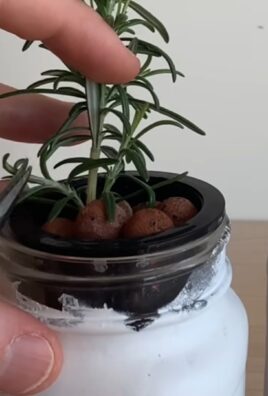
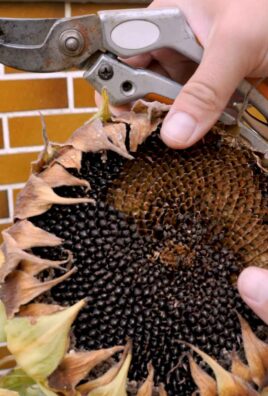
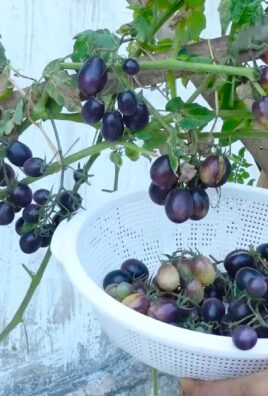
Leave a Comment